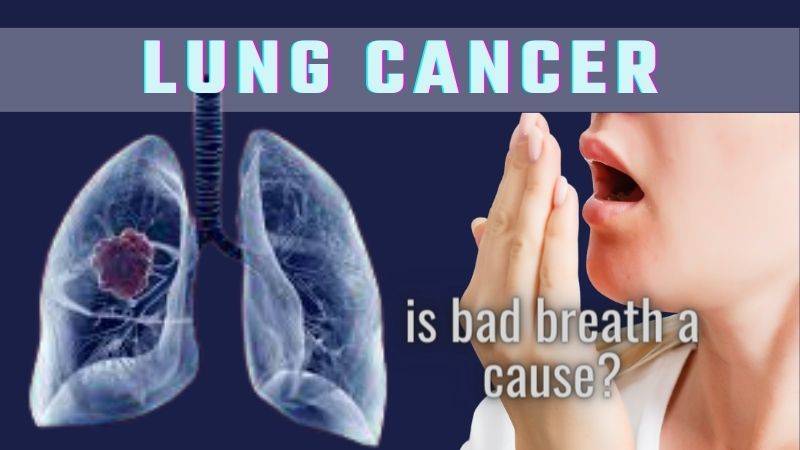Multiple Personality Disorder, also known as Dissociative Identity Disorder (DID), is a complex psychological condition characterized by the presence of two or more distinct identities or personality states within an individual.
These different identities, also referred to as alters, have their own way of perceiving and interacting with the world.
DID is a rare disorder and is often a result of severe trauma or abuse experienced during childhood.
What is DID?

Dissociative Identity Disorder (DID), also known as multiple personality disorder, is a mental health condition where a person has two or more distinct identities or personalities.
The primary identity is the person’s usual self, while the alternate identities, known as “alters,” differ significantly from one another.
Some individuals with DID may have numerous alters, even up to 100.
These alters often have distinct characteristics, such as different
- names
- genders
- ethnicities
- interests
- ages
- behaviors
- ways of interacting with the world around them
People with DID may experience gaps in their memory and have a hard time recalling important information about themselves.
The disorder usually develops as a way for the mind to cope with severe trauma or abuse experienced during childhood.
What Causes DID?

The exact causes of Dissociative Identity Disorder are not fully understood. However, it is believed Dissociative Identity Disorder (DID) is often caused by experiences of sexual, emotional or physical abuse during childhood.
Risk Factors
Some risk factors associated with the development of DID include:
Childhood trauma: Experiencing severe and repetitive trauma during childhood, especially before the age of nine.
Lack of a supportive environment: Growing up in an environment lacking stability, emotional support, or protection.
Suggestibility: Having a highly suggestible personality or susceptibility to suggestion.
Dissociation tendencies: A natural tendency to dissociate or detach from reality during stressful or overwhelming situations.
Symptoms
In addition to the presence of multiple identities, other common signs and symptoms of DID may include:
- Anxiety: Feelings of excessive worry, fear, or unease.
- Delusions: False beliefs or perceptions that are not based in reality.
- Depression: Persistent feelings of sadness, hopelessness, or loss of interest in activities.
- Disorientation: Confusion about time, place, or personal identity.
- Drug or alcohol abuse: Engaging in substance misuse as a way to cope with the disorder.
- Memory loss: Gaps in memory, particularly related to significant life events or periods of time.
- Suicidal thoughts or self-harm: Feeling a desire to harm oneself or engaging in self-injurious behaviors.
Is There a Test for Dissociative Identity Disorder (DID)?

There is no specific test to diagnose DID. A healthcare provider will assess your symptoms and medical history.
They may also conduct tests to exclude any physical conditions that could be causing similar symptoms, like head injuries or brain tumors.
The symptoms of DID often emerge during childhood, typically between the ages of 5 and 10. However, these signs may go unnoticed or be mistaken for other common childhood issues such as Attention deficit hyperactivity disorder (ADHD) or learning difficulties.
As a result, the diagnosis of DID is typically made in adulthood rather than during childhood. Healthcare providers rely on careful evaluation and examination to reach a diagnosis.
Can Dissociative Identity Disorder (DID) be Prevented?
Unfortunately, there is no known way to prevent Dissociative Identity Disorder (DID) from developing.
However, early identification of signs and seeking treatment can assist in managing symptoms effectively. It is crucial for parents, caregivers, and teachers to be vigilant for signs in young children.
Prompt treatment following episodes of abuse or trauma can potentially prevent the progression of DID.
Furthermore, treatment plays a significant role in identifying triggers that lead to personality or identity changes.
Prognosis
The outlook for individuals with DID varies depending on several factors, such as the severity of the disorder, the presence of supportive relationships, and the effectiveness of treatment.
With appropriate therapeutic interventions, including psychotherapy and support from a multidisciplinary team, individuals with DID can experience improvements in symptom management, integration of identities, and overall well-being.
Ongoing support and treatment are often necessary to maintain stability and facilitate a better quality of life.
Who Is at Risk for DID?

Research suggests that the development of Dissociative Identity Disorder (DID) is closely linked to psychological responses to interpersonal and environmental stresses, particularly during early childhood.
It is often associated with a history of recurring, intense, and life-threatening disturbances or traumas, which occur before the age of 6.
In fact, approximately 99% of individuals with dissociative disorders have experienced such traumas during this sensitive developmental stage.
Dissociation can also occur in cases of persistent emotional abuse or neglect, even in the absence of overt physical or sexual abuse.
Studies indicate that when parents are unpredictable and frightening, children may be more likely to develop dissociative symptoms. The prevalence of DID in the population is estimated to be around 1%.
Treatment and Support

The treatment of DID typically involves a combination of psychotherapy, medication, and support from a multidisciplinary team.
Here are some common approaches used in the treatment of DID:
Psychotherapy: A therapist experienced in treating dissociative disorders will work with the individual to explore and integrate the different personalities. Techniques such as trauma-focused therapy, cognitive-behavioral therapy (CBT), and dialectical behavior therapy (DBT) may be used.
Medication: Medications may be prescribed to manage specific symptoms associated with DID, such as depression, anxiety, or sleep disturbances. However, there is no medication that can directly treat the disorder itself.
Supportive environment: A supportive and understanding environment is crucial for individuals with DID. Friends, family, and support groups can provide validation, empathy, and assistance in managing daily challenges.
Self-care strategies: Learning stress reduction techniques, mindfulness, relaxation exercises, and developing healthy coping mechanisms can help individuals manage their symptoms and improve their overall well-being.
Co-occurring Psychiatric Conditions in DID

In addition to dissociation and the presence of multiple or split personalities, individuals with Dissociative Identity Disorder (DID) may also experience various other psychiatric issues. These can include:
- Depression: Persistent feelings of sadness, hopelessness, and loss of interest in activities.
- Mood swings: Rapid and intense shifts in mood, often accompanied by emotional instability.
- Suicidal tendencies: Thoughts, plans, or attempts of self-harm or suicide.
- Sleep disorders: Insomnia, night terrors, sleepwalking, or other disturbances in sleep patterns.
- Anxiety, panic attacks, and phobias: Reactions to specific triggers or stimuli, often accompanied by intense fear and anxiety.
- Substance abuse: Alcohol and drug misuse as a way to cope with symptoms or traumatic experiences.
- Compulsions and rituals: Repetitive behaviors or mental acts performed in an attempt to reduce distress or prevent harm.
- Psychotic-like symptoms: Auditory or visual hallucinations, delusions, or distorted perceptions of reality.
- Eating disorders: Disturbed eating patterns, such as anorexia, bulimia, or binge eating.
It is important to note that while these psychiatric conditions can co-occur with DID, the specific symptoms and their severity may vary among individuals.
Comprehensive assessment and appropriate treatment are essential to address these co-occurring issues and support overall mental health and well-being.
Making Living with DID Easier

Living with Dissociative Identity Disorder (DID) can be challenging, but there are strategies that can help make the journey more manageable:
Build a support system: Surround yourself with understanding healthcare providers, family members, and friends who are aware of your condition and willing to support you. Openly communicate with them and don’t hesitate to ask for help when needed.
Educate yourself and others: Learn about DID and its symptoms to better understand your experiences. Share information with your support system, helping them gain insight into your condition and how to support you effectively.
Seek therapy and treatment: Engage in therapy with a mental health professional experienced in treating dissociative disorders. Therapy can help you manage symptoms, develop coping strategies, and work towards integration and healing.
Practice self-care: Prioritize self-care activities that promote physical, emotional, and mental well-being. This may include engaging in relaxation techniques, maintaining a balanced lifestyle, and engaging in activities that bring you joy and fulfillment.
Manage stress: Develop healthy stress management techniques such as mindfulness, meditation, exercise, or engaging in hobbies that help you relax and unwind.
Famous Individuals Who Have Shared Their Experiences with DID

Some notable individuals who have publicly disclosed their experiences with Dissociative Identity Disorder (DID):
Roseanne Barr: The American comedienne and actress Roseanne Barr had been open about her diagnosis of DID and had spoken about her struggles with the disorder.
Adam Duritz: The lead vocalist of the band Counting Crows, Adam Duritz, had shared his experiences with dissociation and identified with having dissociative episodes, although he has not specifically mentioned a diagnosis of DID.
Herschel Walker: The retired NFL star Herschel Walker had written about his journey with DID in his book, discussing his experiences of feeling disconnected and developing multiple personalities as a coping mechanism.
Walker explained that he developed different alters to deal with the trauma and abuse he endured. Some alters helped him rise to fame, while others allowed him to channel anger and protect himself.
- Billy Milligan: He gained attention for his exceptional case of Dissociative Identity Disorder. With an estimated 24 distinct personalities, each with unique characteristics, his condition captivated public interest.
Milligan’s DID was linked to childhood trauma, serving as a coping mechanism. He faced legal troubles, with his defense attributing the crimes to his alters.
His case sparked awareness and furthered understanding of DID, highlighting the intricate workings of the human mind and trauma-related mental health conditions.
These individuals have contributed to raising awareness and reducing the stigma surrounding Dissociative Identity Disorder by sharing their personal experiences.
Also Read






